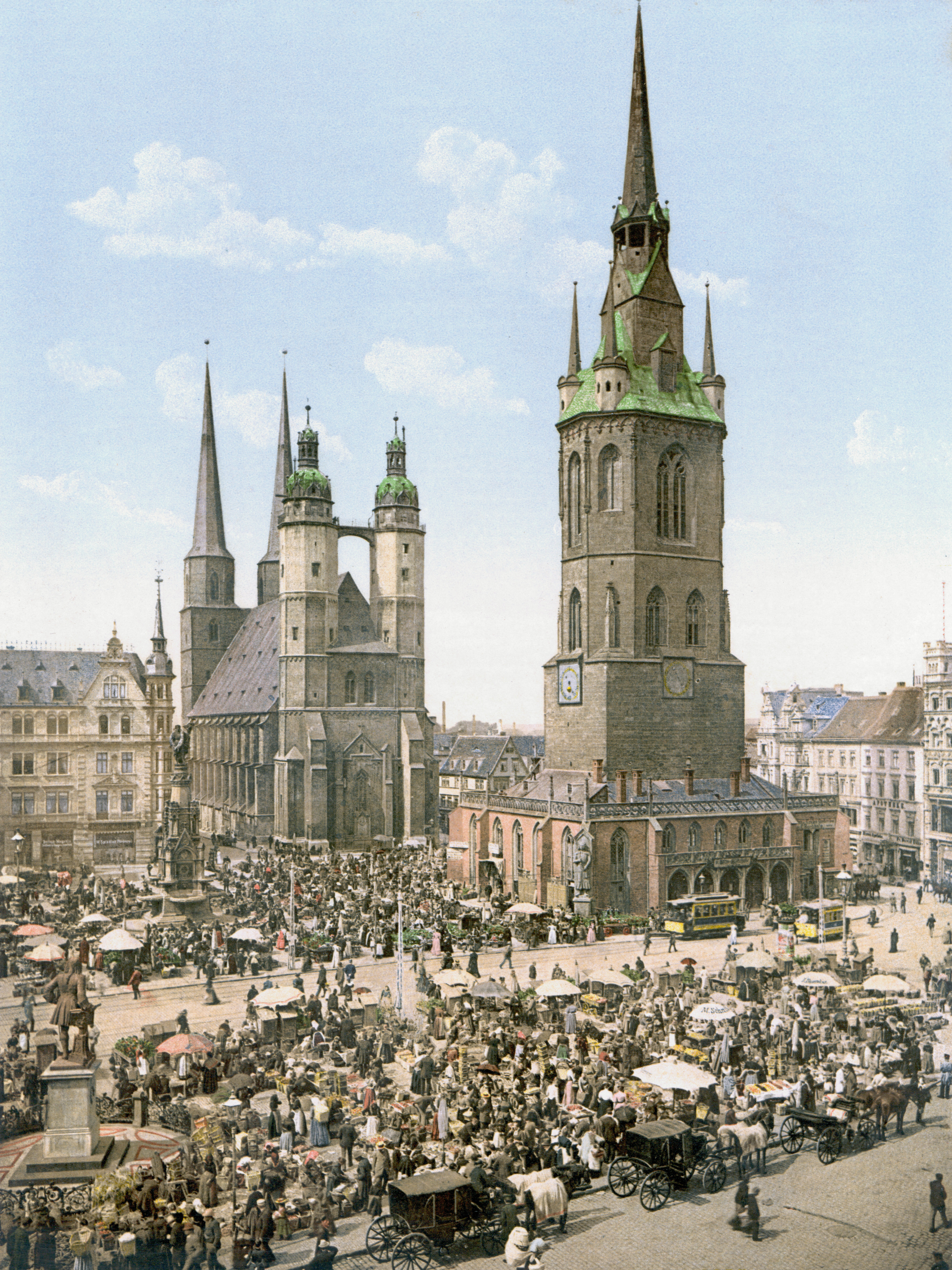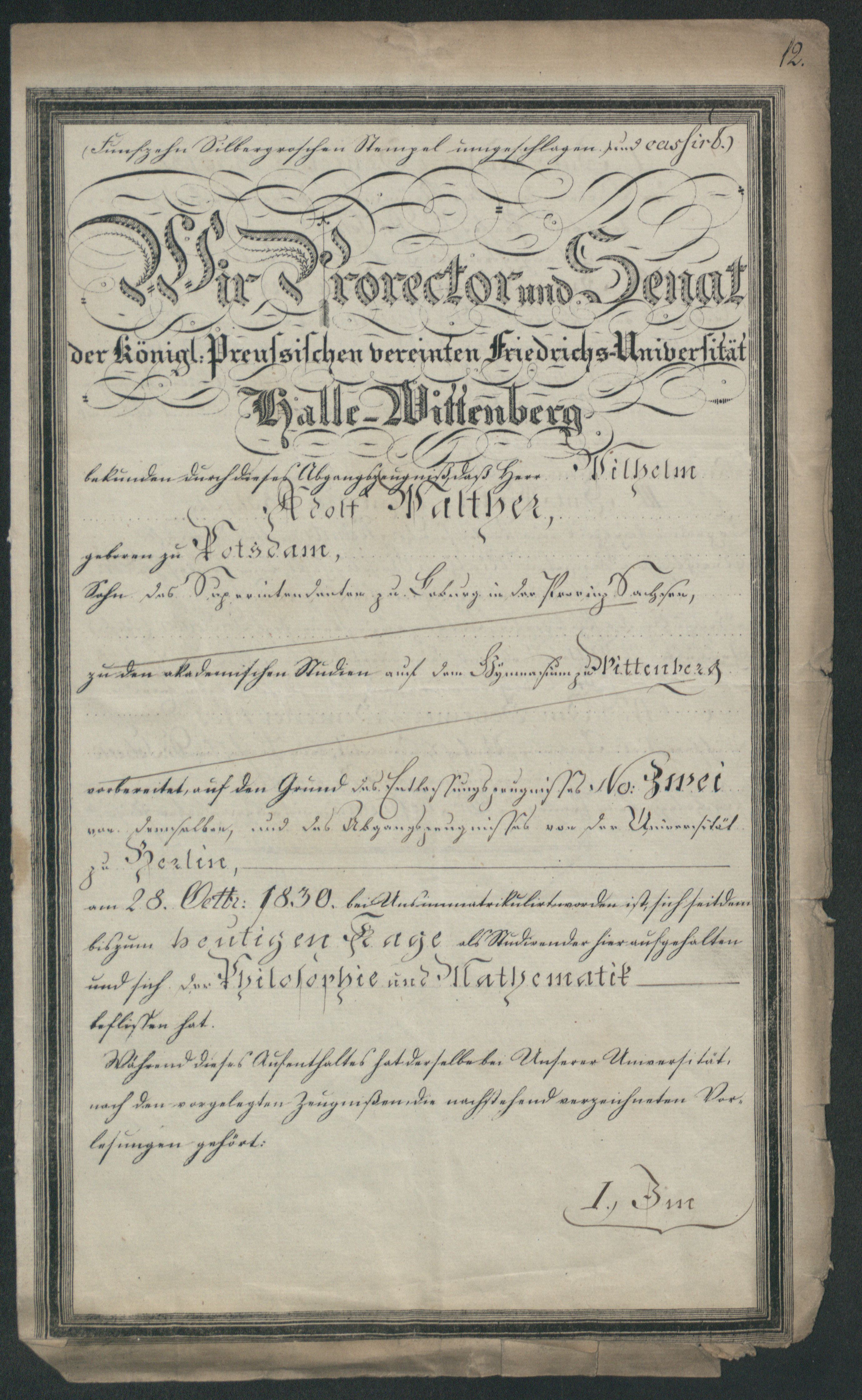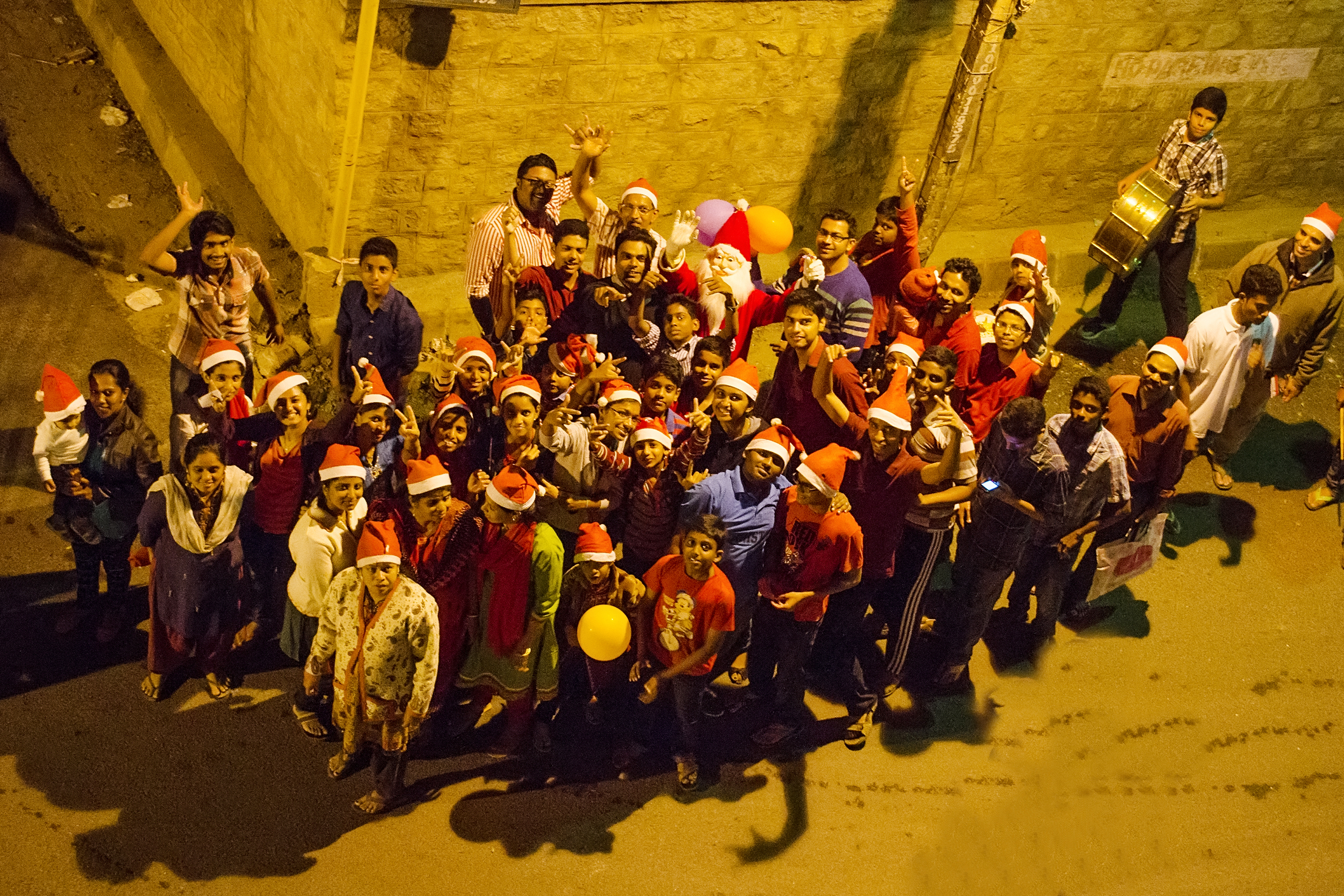|
August Zarnack
Joachim August Christian Zarnack (September 21, 1777 - June 11, 1827) was a German preacher, teacher, and collector of German folk music. He found, arranged, and published a number of collections of such music from his travels and research. Biography Zarnack was born in Mehmke, Saxony to a preacher. In 1795, he left home to receive theological training at a seminary in Halle, Saxony at the University of Halle, and became a preacher himself.Zarnack, Joachim August Christian from The Neue Deutsche Biographie. In 1805, Zarnack moved to to be the town church's second preacher, and also became teacher at a girls' school. In 1815, after the end of the |
Mehmke
Mehmke is a village and a former municipality in the district Altmarkkreis Salzwedel, in Saxony-Anhalt, Germany. Since 1 September 2010, it is part of the municipality Diesdorf Diesdorf is a municipality (''Flecken'') in the district Altmarkkreis Salzwedel, in Saxony-Anhalt, Germany. Geography Diesdorf is situated in the western Altmark about east of the border between Saxony-Anhalt and Lower Saxony, which between 1 .... References Former municipalities in Saxony-Anhalt Altmarkkreis Salzwedel {{AltmarkkreisSalzwedel-geo-stub ... [...More Info...] [...Related Items...] OR: [Wikipedia] [Google] [Baidu] |
Volksmusik
Alpine folk music (; German's ''Volksmusik'' means "people's music" or as a Germanic connotative translation, "folk's music") is the common umbrella designation of a number of related styles of traditional folk music in the Alpine regions of Slovenia, Northern Croatia, Germany, Austria, Switzerland and South Tyrol (Italy). It tends to be dialect-heavy and invokes local and regional lifestyles, cultures and traditions, particularly, those of the Alpine farmers and peasants. Originally transmitted by oral tradition Oral tradition, or oral lore, is a form of human communication in which knowledge, art, ideas and culture are received, preserved, and transmitted orally from one generation to another.Jan Vansina, Vansina, Jan: ''Oral Tradition as History'' (19 ..., the oldest historical records like the Appenzell ''Ranz des Vaches, Kuhreihen'' by Georg Rhau (1488–1548) date back to the 16th century. Alpine folk is characterized by Musical improvisation, improvisation and Var ... [...More Info...] [...Related Items...] OR: [Wikipedia] [Google] [Baidu] |
Halle (Saale)
Halle (Saale), or simply Halle (), is the second largest city of the States of Germany, German state of Saxony-Anhalt. It is the sixth-most populous city in the area of former East Germany after (East Berlin, East) Berlin, Leipzig, Dresden, Chemnitz and Magdeburg as well as the List of cities in Germany by population, 31st-largest city of Germany. With around 226,000 inhabitants, it is less populous than the state capital, Magdeburg. With Leipzig, the largest city of Saxony, Halle forms the polycentric metropolitan area, polycentric Leipzig-Halle conurbation. Leipzig/Halle Airport, Leipzig/Halle International Airport lies between the two cities, in Schkeuditz. The Leipzig-Halle conurbation is at the heart of the larger Central German Metropolitan Region. Halle has been known by many names throughout its history. From the 15th to the 17th century: ''Hall in Sachsen''. From then until the beginning of the 20th century, the name Halle an der Saale was used, and still remains a more ... [...More Info...] [...Related Items...] OR: [Wikipedia] [Google] [Baidu] |
Martin Luther University Of Halle-Wittenberg
Martin Luther University Halle-Wittenberg (), also referred to as MLU, is a public university, public research university in the cities of Halle, Saxony-Anhalt, Halle and Wittenberg. It is the largest and oldest university in the German State of Germany, state of Saxony-Anhalt. MLU offers German and international (English) courses leading to academic degrees such as Bachelor of Arts, BA, B.Sc., BSc, Master of Arts, MA, M.Sc., MSc, Doctorate, doctoral degrees, and habilitation. The university was created in 1817 through the merger of the University of Wittenberg (founded in 1502) and the University of Halle (founded in 1694). MLU is named after Protestant Reformation, Protestant reformer Martin Luther, who was a professor in Wittenberg. Today, the university campus is located in Halle, while ''Leucorea Foundation'' in Wittenberg serves as MLU's convention centre. History University of Wittenberg (''Universität Wittenberg'') was founded in 1502 by Frederick III, Elector of ... [...More Info...] [...Related Items...] OR: [Wikipedia] [Google] [Baidu] |
Beeskow
Beeskow (; , ;) is a town in Brandenburg, in eastern Germany, and capital of the Oder-Spree district. It is situated on the river Spree (river), Spree, 30 km southwest of Frankfurt an der Oder. History In 1518 the town was purchased by the Diocese of Lubusz, and it was the place of death of the last bishop in 1555. The town was a fief of the Kingdom of Bohemia until 1742, when it was annexed by the Kingdom of Prussia. From 1815 to 1947, it was part of the Province of Brandenburg. One of the main escape routes for insurgents of the unsuccessful Polish November Uprising from partitioned Poland to the Great Emigration led through the town. After World War II, Beeskow was incorporated into the State of Brandenburg from 1947 to 1952 and the Bezirk Frankfurt of East Germany from 1952 to 1990. Since 1990, Beeskow is again part of Brandenburg. Demography File:Bevölkerungsentwicklung Beeskow.pdf, Development of Population since 1875 within the Current Boundaries (Blue Line: Popula ... [...More Info...] [...Related Items...] OR: [Wikipedia] [Google] [Baidu] |
Napoleonic Wars
{{Infobox military conflict , conflict = Napoleonic Wars , partof = the French Revolutionary and Napoleonic Wars , image = Napoleonic Wars (revision).jpg , caption = Left to right, top to bottom:Battles of Battle of Austerlitz, Austerlitz, Fall of Berlin (1806), Berlin, Battle of Friedland, Friedland, Battle of Aspern-Essling, Aspern-Essling, French occupation of Moscow, Moscow, Battle of Leipzig, Leipzig and Battle of Paris (1814), Paris , date = {{start and end dates, 1803, 5, 18, 1815, 11, 20, df=yes({{Age in years, months, weeks and days, month1=05, day1=18, year1=1803, month2=11, day2=20, year2=1815) , place = Atlantic Ocean, Caucasus, Europe, French Guiana, Mediterranean Sea, North Sea, West Indies, Ottoman Egypt, Egypt, East Indies. , result = Coalition victory , combatant1 = Coalition forces of the Napoleonic Wars, Coalition forces:{{flagcountry, United Kingdom of Great Britain and ... [...More Info...] [...Related Items...] OR: [Wikipedia] [Google] [Baidu] |
O Tannenbaum
"" (; "O fir tree"), known in English as "O Christmas Tree", is a German Christmas song. Based on a traditional folk song that was unrelated to the holiday, it became associated with the traditional Christmas tree. History The modern lyrics were written in 1824 by the Leipzig organist, teacher and composer Ernst Anschütz. A '' Tannenbaum'' is a fir tree. The lyrics do not actually refer to Christmas, or describe a decorated Christmas tree. Instead, they refer to the fir's evergreen quality as a symbol of constancy and faithfulness. Anschütz based his text on a 16th-century Silesian folk song by Melchior Franck, "". In 1819 August Zarnack wrote a tragic love song inspired by this folk song, taking the evergreen, "faithful" fir tree as contrasting with a faithless lover. The folk song first became associated with Christmas with Anschütz, who added two verses of his own to the first, traditional verse. The custom of the Christmas tree developed in the course of the 19th centur ... [...More Info...] [...Related Items...] OR: [Wikipedia] [Google] [Baidu] |
Liebeslieder (other) ''
{{disambiguation ...
Liebeslieder (German, lit. "love songs") may refer to love songs in general, or to these specific works: * ''Liebeslieder'', Op. 114 (Strauss), a waltz by Johann Strauss II * ''Liebeslieder Walzer'' (Brahms Opus 52), waltzes by Johannes Brahms for four-hands piano and vocal quartet * '' Neue Liebeslieder'', Opus 65, a sequel to Brahms' Opus 52, for piano and voices * ''Liebeslieder Walzer'' (ballet), George Balanchine's ballet set to the two Brahms works * Liebeslieder Singers, the chorus in Stephen Sondheim's ''A Little Night Music ''A Little Night Music'' is a musical with music and lyrics by Stephen Sondheim and book by Hugh Wheeler. Inspired by the 1955 Ingmar Bergman film '' Smiles of a Summer Night'', it involves the romantic lives of several couples. Its title is a ... [...More Info...] [...Related Items...] OR: [Wikipedia] [Google] [Baidu] |
Ernst Anschütz
Ernst Gebhard Salomon Anschütz (28 October 1780 in Goldlauter near Suhl, Electorate of Saxony – 18 December 1861 (other sources: 11 December 1861 by , (Saxonian Biography) ) in ) was a German teacher, organist, , and . He is also known for his account of the death of Johann Christian Woyzeck in 1824 (see: |
Christmas Carol
A Christmas carol is a Carol (music), carol on the theme of Christmas, traditionally sung at Christmas itself or during the surrounding Christmas and holiday season. The term noel has sometimes been used, especially for carols of French origin. Christmas carols may be regarded as a subset of the broader category of Christmas music. History The first known Christmas hymns may be traced to 4th-century Rome. Latin hymns such as Veni redemptor gentium, written by Ambrose, Archbishop of Milan, were austere statements of the theological doctrine of the Incarnation in opposition to Arianism. Corde natus ex Parentis (''Of the Father's Heart Begotten, Of the Father's heart begotten'') by the Spanish poet Prudentius (d. 413) is still sung in some churches today. In the 9th and 10th centuries, the Christmas sequence (or prose) was introduced in Northern European monasteries, developing under Bernard of Clairvaux into a Sequence (liturgy), sequence of rhymed stanzas. In the 12th cent ... [...More Info...] [...Related Items...] OR: [Wikipedia] [Google] [Baidu] |
University Of Düsseldorf
A university () is an institution of tertiary education and research which awards academic degrees in several academic disciplines. ''University'' is derived from the Latin phrase , which roughly means "community of teachers and scholars". Universities typically offer both undergraduate and postgraduate programs. The first universities in Europe were established by Catholic monks. The University of Bologna (), Italy, which was founded in 1088, is the first university in the sense of: *being a high degree-awarding institute. *using the word (which was coined at its foundation). *having independence from the ecclesiastic schools and issuing secular as well as non-secular degrees (with teaching conducted by both clergy and non-clergy): grammar, rhetoric, logic, theology, canon law and notarial law.Hunt Janin: "The university in medieval life, 1179–1499", McFarland, 2008, , p. 55f.de Ridder-Symoens, Hilde''A History of the University in Europe: Volume 1, Universities in the Midd ... [...More Info...] [...Related Items...] OR: [Wikipedia] [Google] [Baidu] |
Ich Hab Die Nacht Geträumet
"" (I dreamed last night) is a German folk song. It is a melancholic song that tells of a disturbing dream foreshadowing death – a rosemary tree in the garden, falling leaves, and a jar broken to pieces and bleeding a red liquid. In Northern Germany, rosemary was planted in graveyards, and mourners at funerals would sometimes wear rosemary stalks. History It is unknown when the song was first popularized, but the melody was first written and published in 1777 by Friedrich Nicolai in ''Eyn feyner kleyner Almanach'' with the text of "" (A hunter wanted to go hunting). Other versions using the same melody but different lyrics included "" (The leaves fall from the trees) by Siegfried August Mahlmann in 1804/1805, "" (Beautiful children love), and "" (In Koblenz on the bridge). The best-known and most widely used lyrics to the melody were written by German preacher and collector of folk songs August Zarnack. Zarnack's version was originally published under the title "" (The heavy ... [...More Info...] [...Related Items...] OR: [Wikipedia] [Google] [Baidu] |





